Home / Training / Manuals / Breast self-examination (BSE)
Breast self-examination (BSE) is a routine examination that should be carried out at the same time each month to physically check for any lumps or other changes. It entails two important components, i.e. looking and feeling. With this method, women should learn what is normal for them, so that they can recognise any changes immediately.
Though scientists have concluded that breast self examination is not an effective method of reducing mortality from breast cancer and the vast majority of changes found during breast self-examination are not cancerous, in many countries it may be the only alternative and women should be encouraged to be aware of what is normal breast and recognize changes in their breast, size, shape, skin and nipples as soon as possible by self-examination once in a month or two basis. Most of the breast lumps are detected when women take bath.
W.H.O says that National Cancer Control programmes should not recommend mass screening by breast self-examination and physical examinations of the breast. Rather, programmes should encourage breast awareness and early diagnosis of breast cancer, especially for women aged 40-69 years attending primary health care centres or hospitals for other reasons, by offering them clinical breast examinations.
Acknowledgments:
We thank our colleagues, listed below, for their thoughtful comments and suggestions, which greatly improved the content and quality of this tool: Dr Beela, Dr Golfier, Dr Histier, Dr Fontanière, Dr Frappart, Dr Keita, Dr Kurkure, Dr Ramadas and Dr Thara.
We are grateful to Mr Arthur Munoz and Guillaume Vialaneix (Studio M) for the 3 dimension animations.
BREAST CANCER / BREAST SELF-EXAMINATION (BSE)
Breast self-examination (BSE) is a routine examination that should be carried out at the same time each month to physically check for any lumps or other changes. It entails two important components, i.e. looking and feeling. With this method, women should learn what is normal for them, so that they can recognise any changes immediately.
Though scientists have concluded that breast self examination is not an effective method of reducing mortality from breast cancer and the vast majority of changes found during breast self-examination are not cancerous, in many countries it may be the only alternative and women should be encouraged to be aware of what is normal breast and recognize changes in their breast, size, shape, skin and nipples as soon as possible by self-examination once in a month or two basis. Most of the breast lumps are detected when women take bath.
W.H.O says that National Cancer Control programmes should not recommend mass screening by breast self-examination and physical examinations of the breast. Rather, programmes should encourage breast awareness and early diagnosis of breast cancer, especially for women aged 40-69 years attending primary health care centres or hospitals for other reasons, by offering them clinical breast examinations.
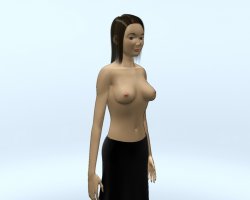 | One important component during breast examination is the
position. Depending on whether looking at or feeling their breast, women should select different options. Use of a mirror and a proper light system facilitate detection of abnormalities. Breast self examination can be done either in the sitting or lying down position (dusting the hand with powder or using cream). In this picture the subject has both arms folded down. |
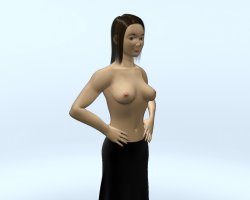 | Both arms placed over your waist: Place your hands on your waist and press inward, and turn side to side to note any changes. |
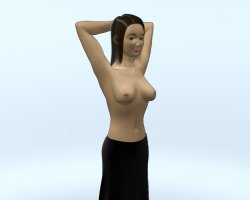 | Both arms raised above head: Place your hands behind your head and press forward. Again, turn side to side an look for changes. |
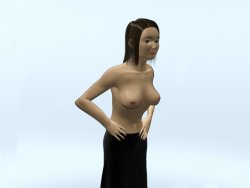 | Slightly bending forward with arms over waist: Place your hands at your waist and bow toward the mirror, letting the breasts fall forward. Note any change in shape. |
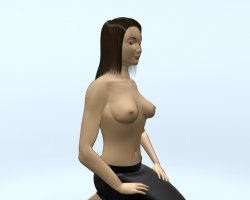 | Woman in sitting position. |
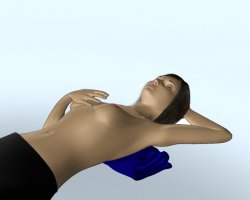 | Lie flat on your back with a pillow or folded towel under the shoulder of the breast to be examined and use the opposite hand of the breast you would like to examined. |
| Stand undressed in front of a mirror that is wide enough to watch your entire chest, with your arms relaxed by your sides. |
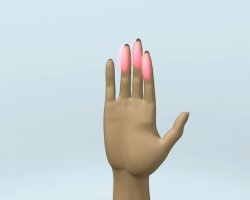 | Use the pads of three middle fingers (pink areas) to examine every inch of your breast tissue. Move your fingers in small circular and regular movement to cover the entire breast, part by part. Do not lift your fingers from your breast between palpations. You can use powder,lotion or soap to help your fingers glide from one spot to the next. |
| | If you have difficulty using or feeling with the finger pads of one of both hands, try using the thumb, the palm of your hand. |
| The examination area is bound by the line which extends down from the middle of the armpit to just beneath the breast, continues across the underside of the breast to the middle of the breast bone, then moves up and along the collar bone and back to the middle of the armpit (shaded area). Most breast cancers occur in the upper outer area of the breast. |
| For each small circle, change the amount of pressure, so you can feel all the different levels of your breast tissue. Make each small circle three times: once light, once medium and once deep-before you move on to the next area. |
| Use the following search pattern to examine all of your breast tissue. Be sure to palpate carefully beneath the nipple. Women who have had any breast surgery should still examine the entire area and the scar. Any scar should also be carefully examined from end to end. Start in the armpit, proceed downward to the lower boundary. Move a finger’s width toward the middle and continue palpating at upward until you reach the collarbone. Repeat until you have covered all the breast tissue. Make at least 6 strokes before the nipple and 4 strokes after the nipple. You may need between 10 and 16 strokes to cover all of your breast tissue. |
| Other search patterns can be used to cover the breast depending on the woman’s personal choice. First alternative is in a circular pattern second is in a triangular pattern; Full coverage of both breasts, one by one, is very important. In this picture you can see the breast palpation in circle pattern. |
| Breast palpation in triangle pattern. |
| Examination of the armpits. |
| Squeeze your nipples to check for discharge. Many women have a normal discharge. Nipple discharge can also be a sign of a breast problem. Look for discharge in your bra or clothing. Report any discharge to your physician. |
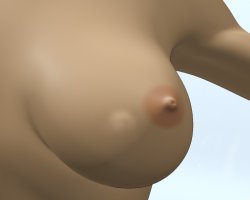 | Lumps, bumps or thickening: Feel for a lump, bump or thickening that has not been there before. |
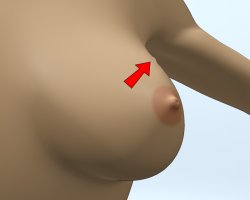 | Lumps, bumps or thickening: Feel for a lump, bump or thickening that has not been there before. |
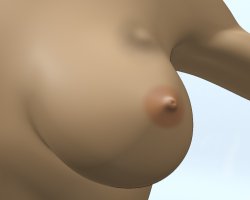 | Lumps, bumps or thickening: Feel for a lump, bump or thickening that has not been there before. |
 | Pain (only when it is a new and persistent pain report to doctor). |
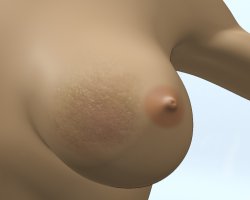 | Change in skin color or texture: Peau d'orange. |
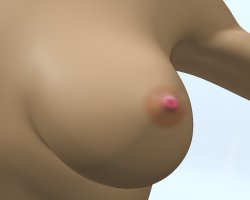 | Change in skin color or texture: redness / eczema (beginning). |
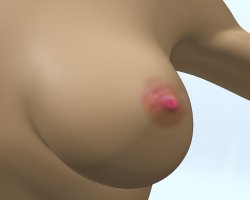 | Change in skin color or texture: redness / eczema (advanced). |
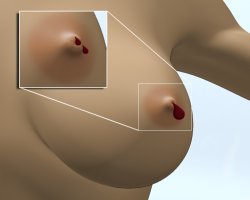 | Leaking: Look for dripping, leaking or discharge from a nipple (blood discharge). |
 | Leaking: Look for dripping, leaking or discharge from a nipple (Greenish discharge). |
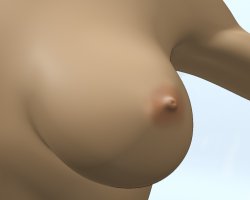 | Nipple change: Look for a change in the way your nipple is pointing: Aerola change. |
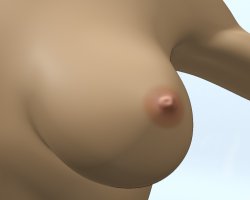 | Nipple change: Look for a change in the way your nipple is pointing: Another aerola change. |
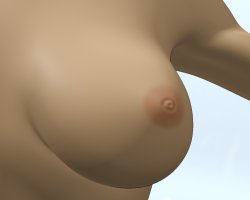 | Nipple change: Look for a change in the way your nipple is pointing: nipple retraction (beginning). |
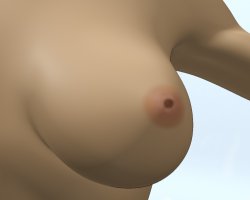 | Nipple change: Look for a change in the way your nipple is pointing: nipple retraction (advanced). |
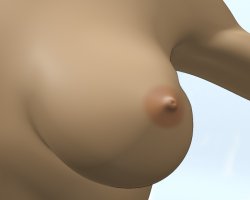 | Dimpling/puckering: Look for any dimpling or puckering in the breast. |
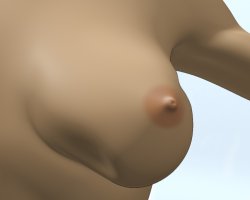 | Dimpling/puckering: Look for any dimpling or puckering in the breast. |
Acknowledgments:
We thank our colleagues, listed below, for their thoughtful comments and suggestions, which greatly improved the content and quality of this tool: Dr Beela, Dr Golfier, Dr Histier, Dr Fontanière, Dr Frappart, Dr Keita, Dr Kurkure, Dr Ramadas and Dr Thara.
We are grateful to Mr Arthur Munoz and Guillaume Vialaneix (Studio M) for the 3 dimension animations.
25 avenue Tony Garnier CS 90627 69366, LYON CEDEX 07 France - Tel: +33 (0)4 72 73 84 85
© IARC 2025 - Terms of use - Privacy Policy.
© IARC 2025 - Terms of use - Privacy Policy.



